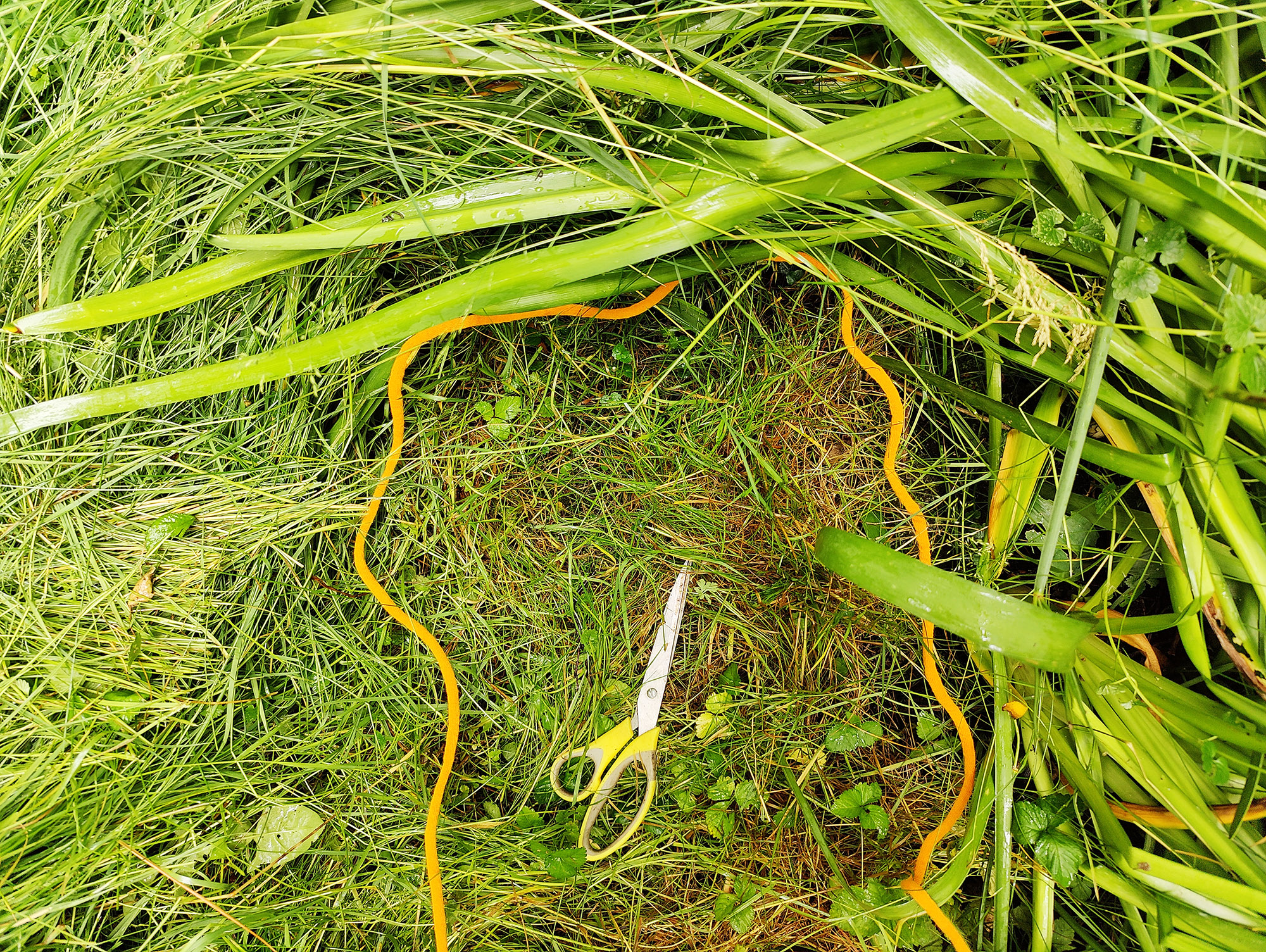Irina Shapiro
Slow Mowing Praxis
Back to Witnessing Garden 404
This praxis spread through the whole summer of 2021 and was situated on the lawn of allotment 404, which size is 24² meters. I took small steps to cut the lawn's grass – 10x10 centimetres daily – to witness every creature inhabiting this lawn and, in case of machine mowing, remain or die unnoticed. Usually, machine mowing takes about 30 minutes to cut this tiny field. In the case of Slow Mowing, when I used small scissors and almost religiously collected all cut plants, I finished only 4² meters in one month of the ritual.
Such a slow approach to cutting plants allowed growth, flowering and seeding, ensuring their reproduction. It enabled insects to inhabit this land, seeking cooling and hydrating areas during hot summers. Potentially, in the context of larger urban spaces, allowing diversity of cultures in the lawn’s soil increases its resistance towards drying out, preserving water in it and therefore increasing the qualities of the soil.
My Slow Moving as an engagement with the ‘unimportant’ (as the importance of the lawn is not in the diversity of the species that co-inhabit it) was a protocol of introducing myself to what gardeners would call ‘weeds’ – insignificant and largely unwanted creatures. My grandmother would suggest I plant valuable something there instead.
Which stories emerge from this weeds’ reading? What does it mean to read weeds that we cut during the mowing? What are weeds, and how are their bodies entangled with our human bodies? Do we stop medical and eatable plants from growing by cutting their shoots with the grass?









